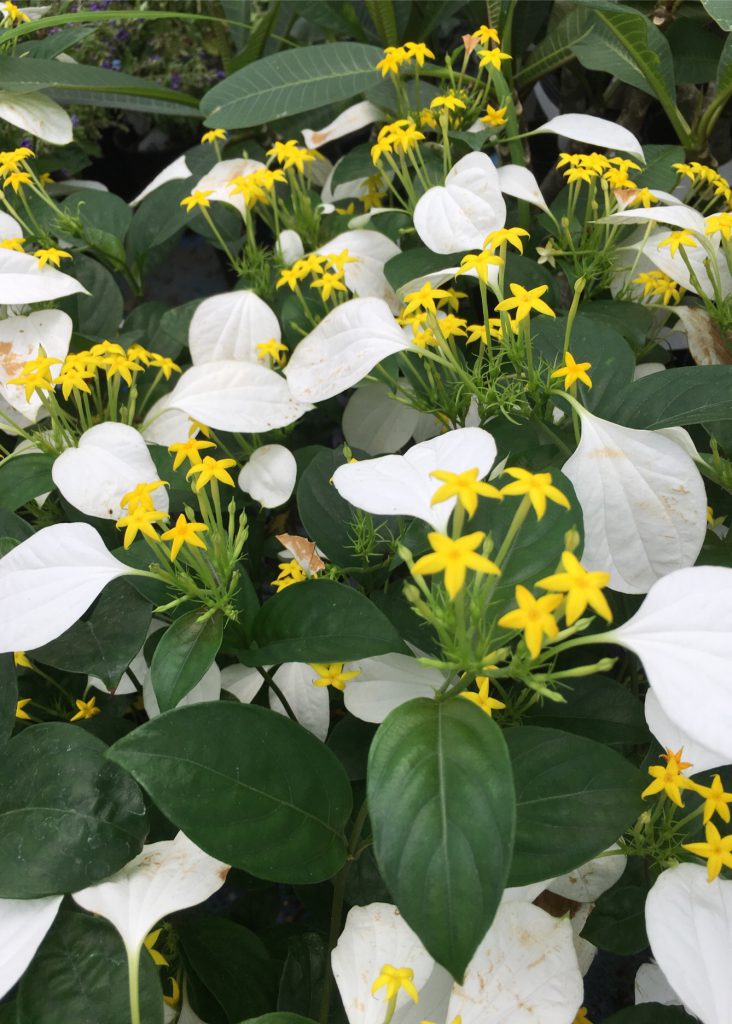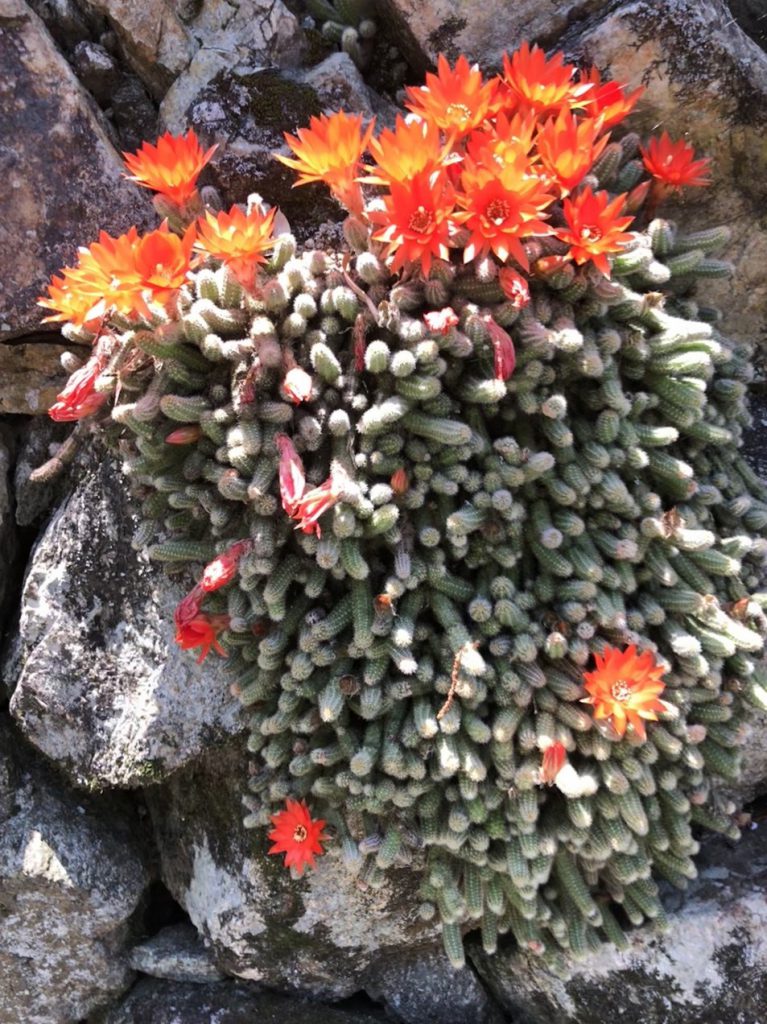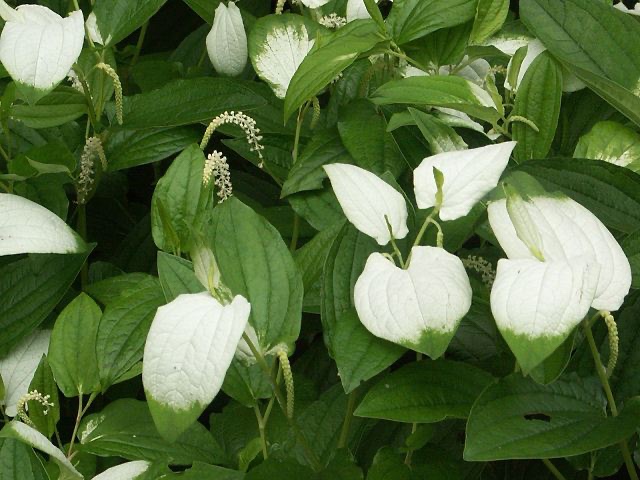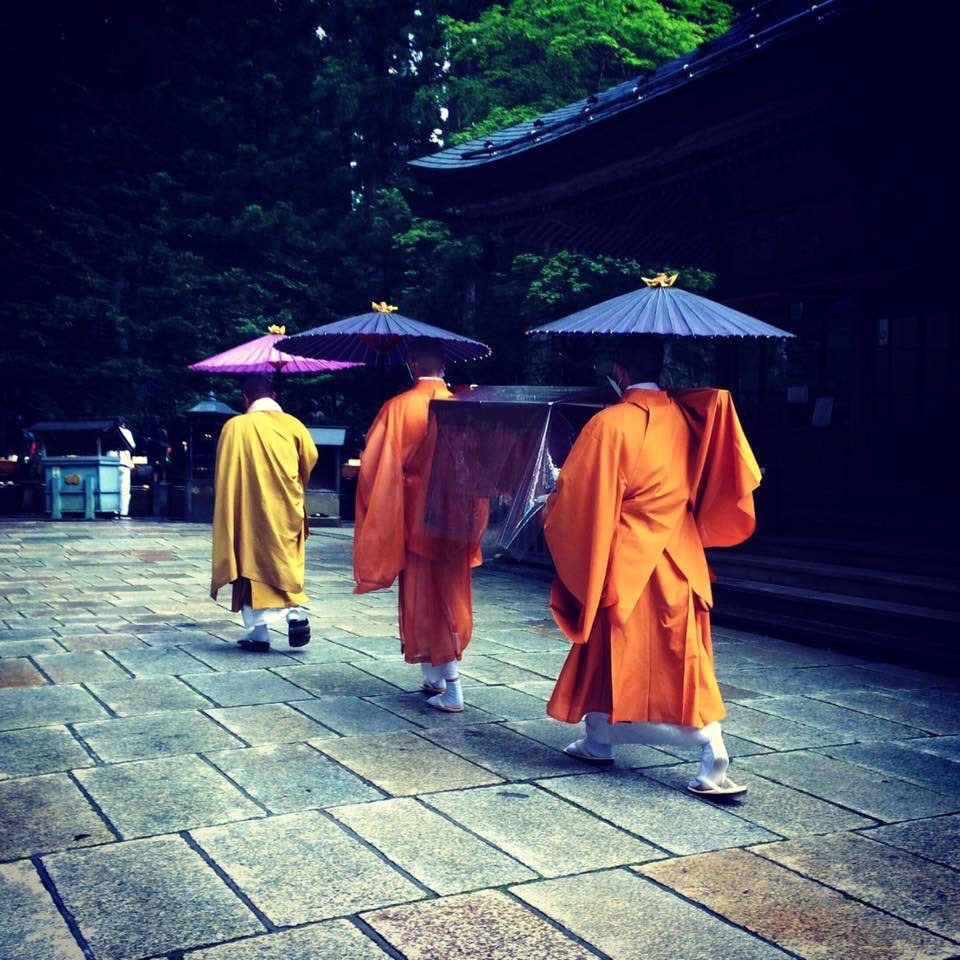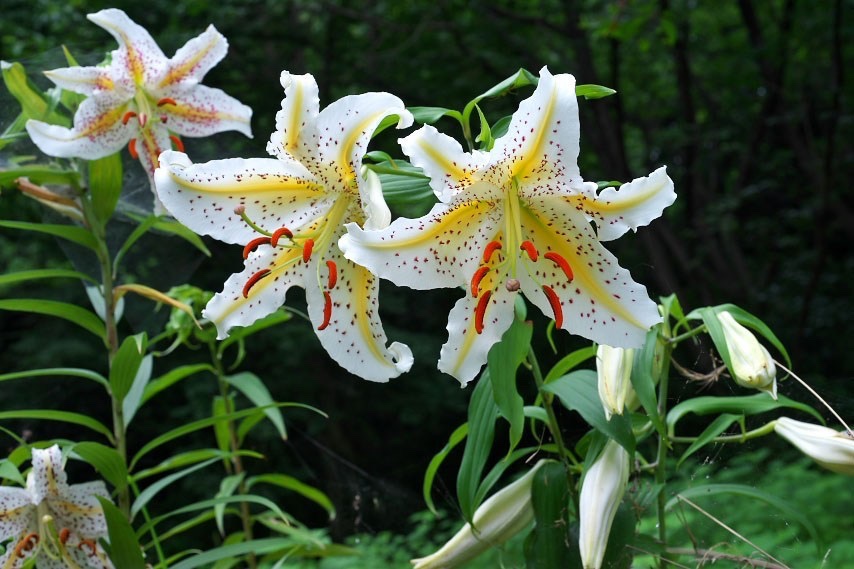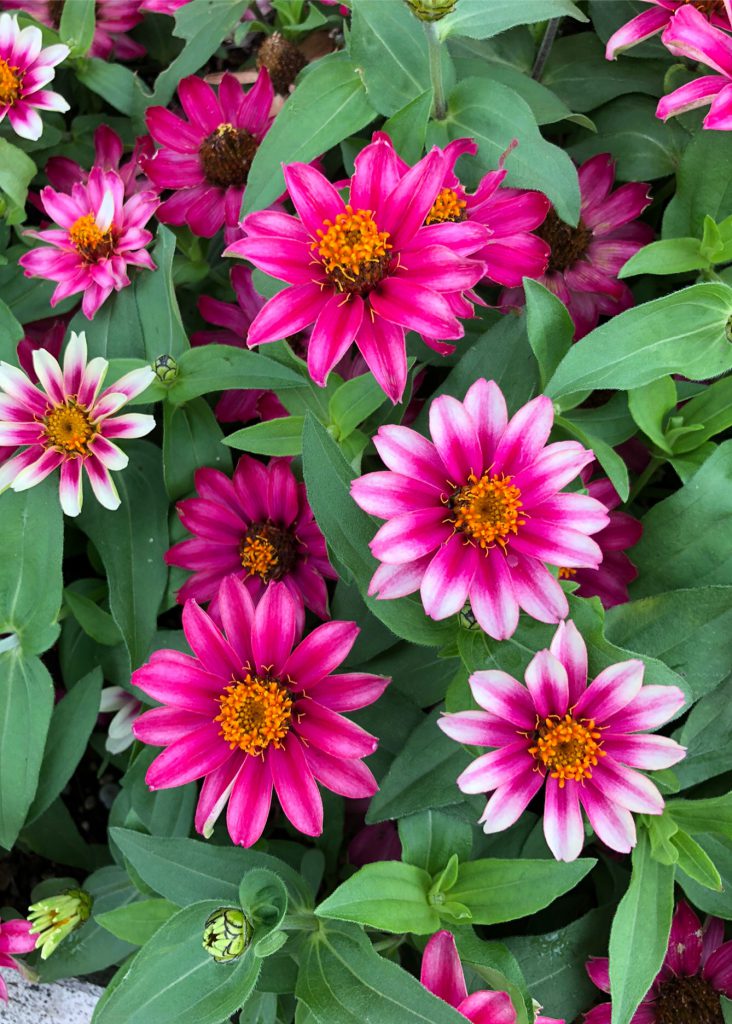
The state of Hyakunichi-so has changed completely now. It is a flower that was always offered to Buddhist Buddha in the Obon time, and nowadays it is called Zinnia, and there are many dwarf varieties suitable for flower beds and containers, which makes it a very popular gardening material. The Zinnia in the photo was taken in a nearby park, and it is called Zinnia Profision, a gardening species created by “Sakata Seeds Co.” by crossing Zinnia elegans and Zinnia linealis. The flowering period is long as the name “hyakunich(hundred days)”, and it continues to bloom one after another throughout the summer.
百日草も随分様変わりしたものです。昔からお盆には必ず仏前にお供えした花ですが、今はジニアと呼ばれて、花壇やコンテナなどに適した矮性の品種がたくさん流通しており、ガーデニング素材としてとても人気があります。写真のジニアは近くの公園で撮ったものですが、ジニア・プロフィージョンと言って、「サカタのタネ」が百日草(ジニア・エレガンス)とジニア・リネアリスを交配してつくり出した園芸種です。「百日」というだけあって開花期間が長く、夏中次々と咲き続けます。

